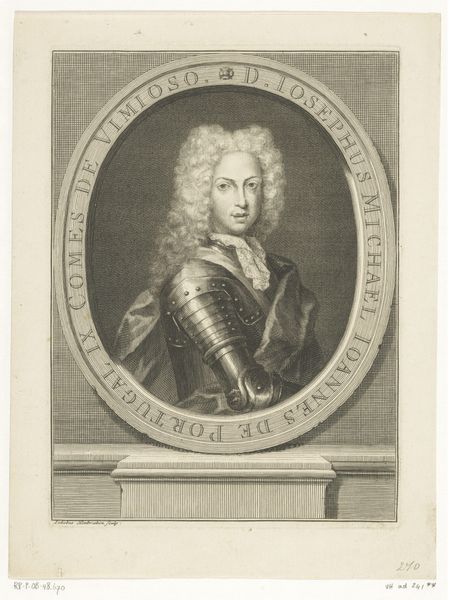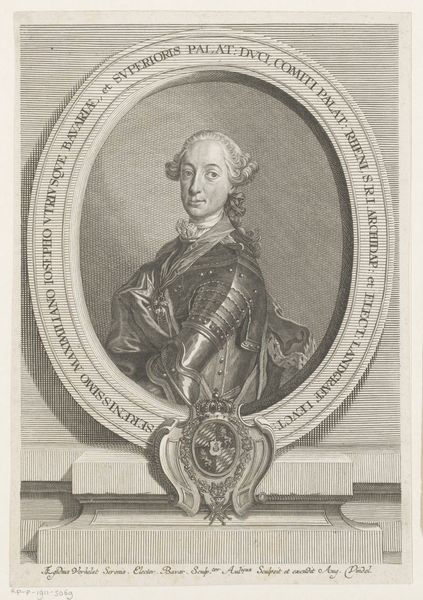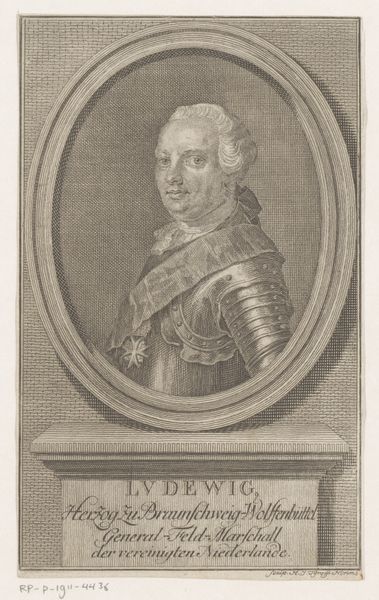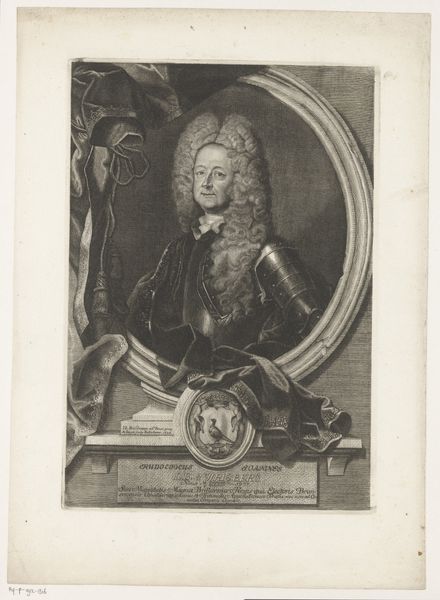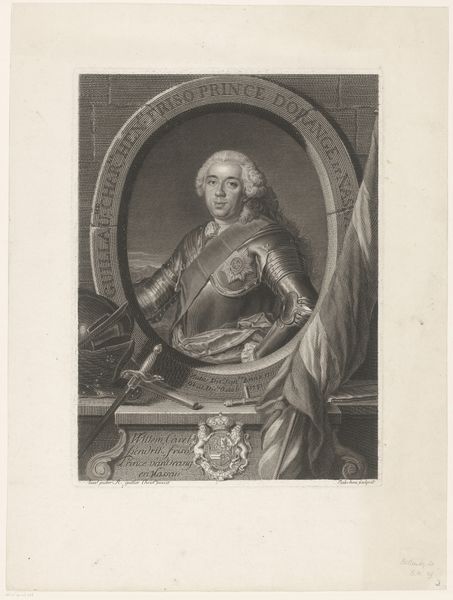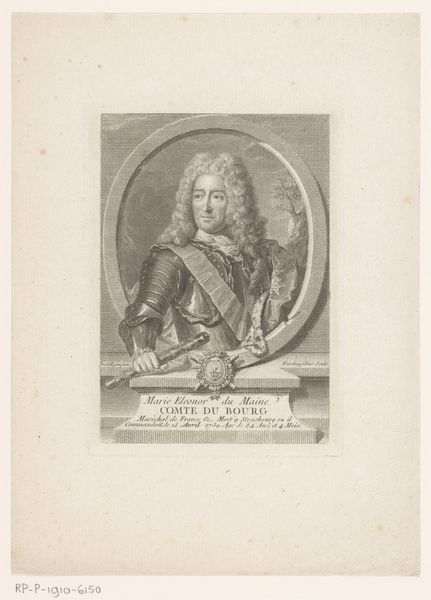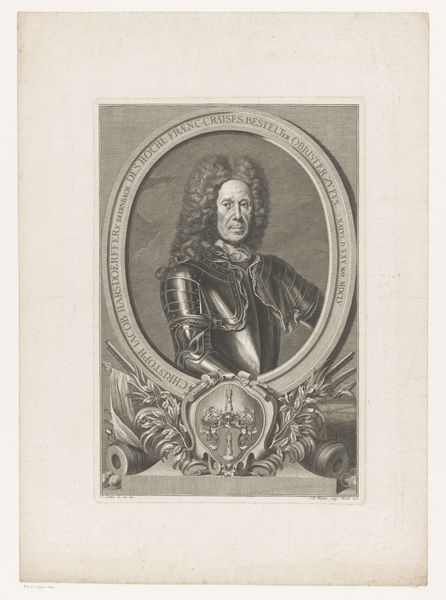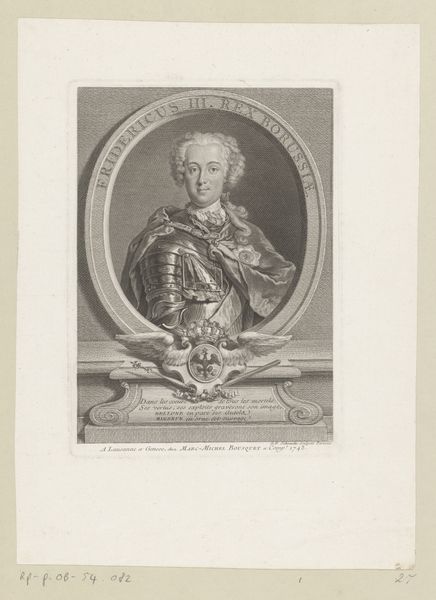
#
pencil drawn
#
light pencil work
#
wedding photograph
#
photo restoration
#
pencil sketch
#
old engraving style
#
caricature
#
pencil drawing
#
framed image
#
pencil work
Dimensions: height 260 mm, width 192 mm
Copyright: Rijks Museum: Open Domain
Curator: Before us is Michel Aubert's "Portret van Lodewijk XVI als dauphin," created in 1747 and residing here at the Rijksmuseum. Its a formal engraving depicting Louis as the heir apparent. It strikes me as both imposing and somewhat fragile simultaneously. What's your initial reaction? Editor: The image's mood evokes austerity, like an inventory report noting assets and lineage. Its materiality interests me: engraved lines forming shapes on paper that likely demanded skilled craftsmanship under pressure. Curator: Yes, the engraving technique itself is crucial. Aubert's mastery is evident in the delicate hatching that defines form and creates subtle tonal gradations. Notice how the play of light and shadow sculpts Louis's face, lending it a lifelike quality despite the rigid formality of the composition. Semiotically, every element contributes to the construction of royal power. Editor: And how that power manifests! Engraving allowed for multiple, consistent reproductions. The act of disseminating such an image throughout society highlights labor; skilled hands crafting not only artistry, but reinforcing ideas of aristocratic rule across countless prints intended for broad consumption. The "high art" collapses as it intersects popular access and reinforces hierarchy through mass material availability. Curator: A compelling point. The formal qualities–the symmetry, the idealized features, the carefully rendered textures of the armor and drapery–serve a specific purpose within the visual language of power. Editor: That very language masks an economic structure. Aubert, commissioned, employed. A system ensuring those values depicted perpetuate by relying on the backs, skill and access provided via resources that solidify their elite status as arbiters taste themselves while remaining removed and invisible forces pushing consumption of material goods portraying class elevation/association. Curator: Certainly, we can examine the engraving's social function and its connection to patronage networks. But it is critical to acknowledge Aubert’s hand in skillfully delivering exactly what they were hired to accomplish and using composition for desired impact. The portrait isn't simply an inert reflection; it's a deliberate construction of image and perception. Editor: Yes, precisely. A convergence of artistry, manufacturing, and social conditioning manifested on a piece of paper ready for transaction throughout every layer making society visible through this representation, each playing their designed roll on different strata ensuring a pre defined outcome within historical context now displayed neatly beneath museum lighting Curator: Well, our contrasting perspectives provide quite rich layers onto experiencing this singular piece! Editor: Indeed. Perhaps examining the subtle marks of aging will offer clues regarding material degradation across its lifetime, to be revisited perhaps during our subsequent meeting.
Comments
No comments
Be the first to comment and join the conversation on the ultimate creative platform.
